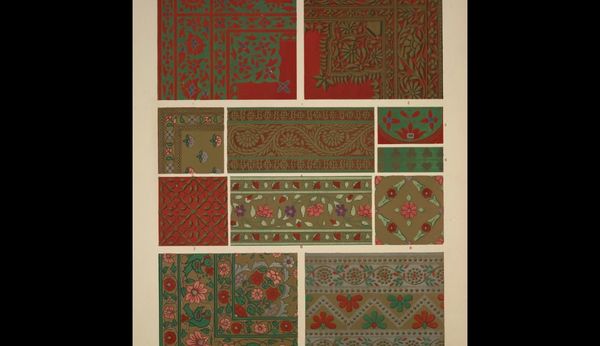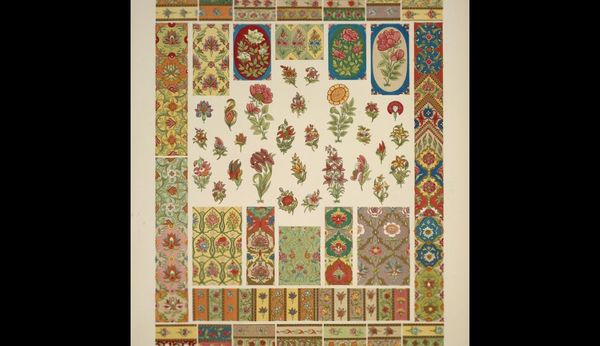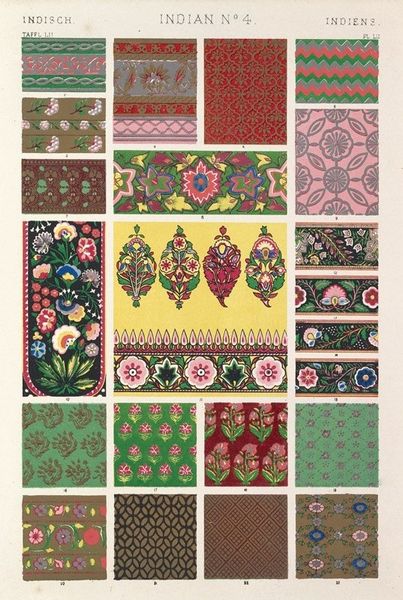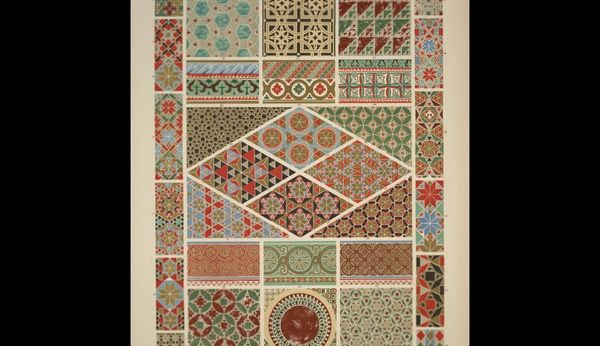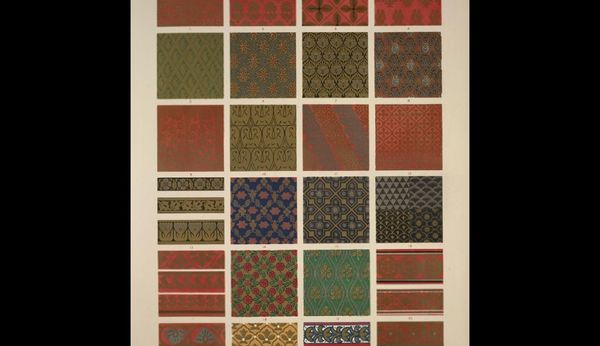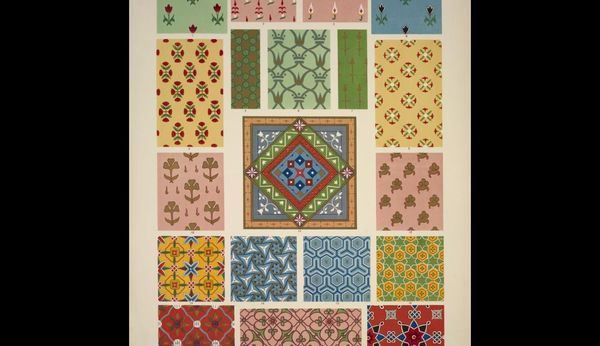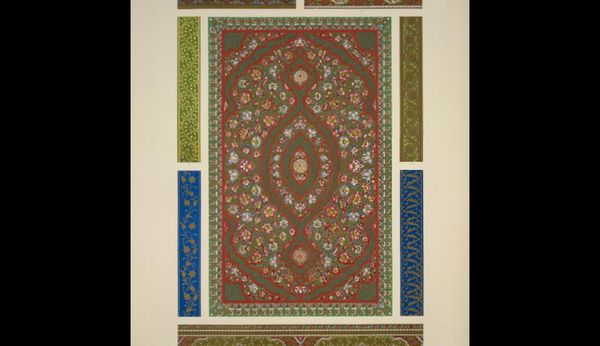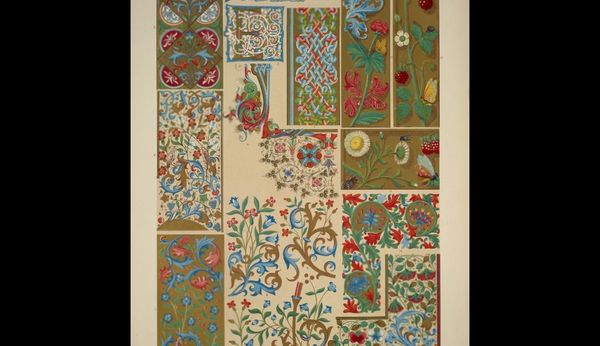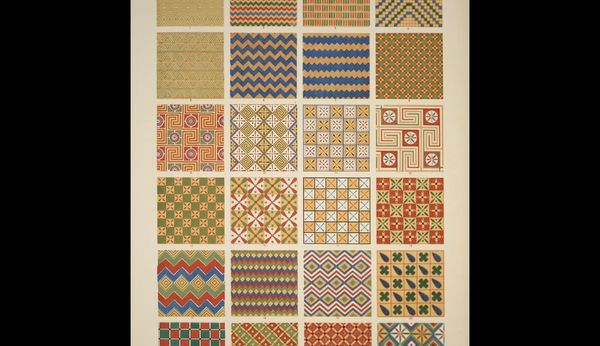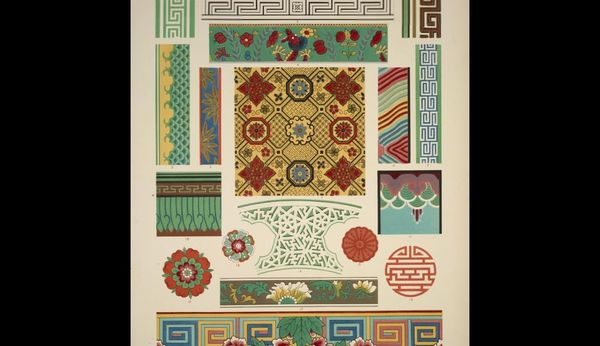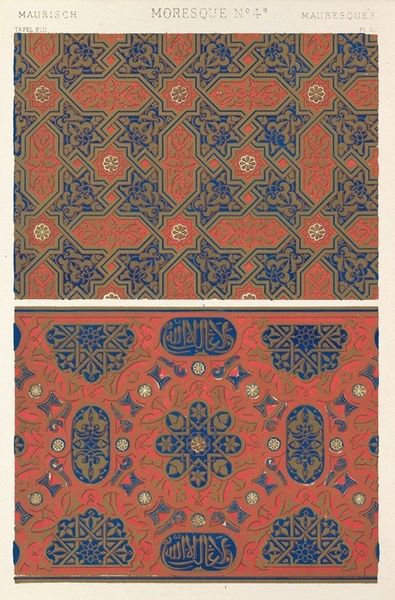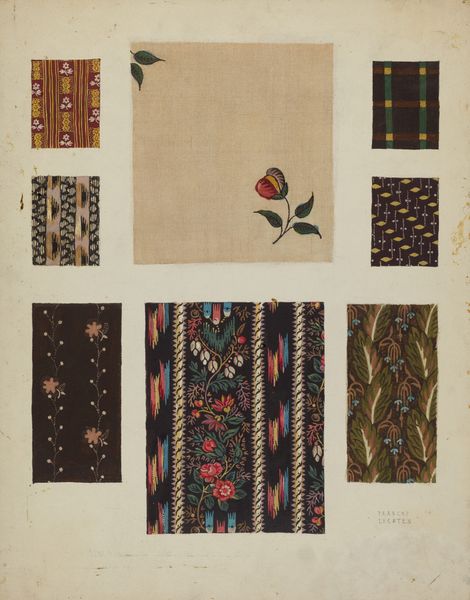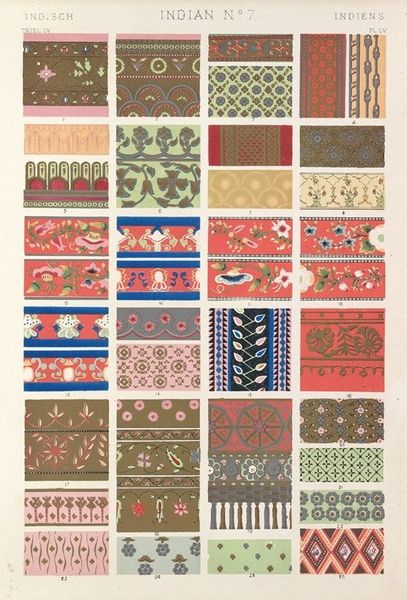
Indian Ornament no. 4. Ornaments from woven fabrics and paintings on vases exhibited in the Indian Collection, now at Marlborough House
0:00
0:00
drawing, print, textile
#
drawing
# print
#
pattern
#
textile
#
leaf
#
geometric pattern
#
geometric
#
orientalism
#
decorative-art
Copyright: Public domain
Owen Jones made this lithograph print, ‘Indian Ornament no. 4,’ during the height of British Imperialism. It documents patterns from textiles and vases exhibited in the Indian Collection at Marlborough House. Jones was a design reformer and proponent of incorporating historical styles, especially non-Western ones, into modern design. His publication, ‘The Grammar of Ornament,’ sought to codify design principles from various cultures, to establish universal design rules. This interest in non-Western design was shaped by the British Empire’s access to global cultures. The Indian Collection, like the South Kensington Museum, later renamed the Victoria and Albert Museum, was one of the Imperial institutions that served as an archive of cultural forms from around the world, particularly the colonized world. Jones took inspiration from these collections, repurposing Indian motifs for a British audience. To better understand the history of works like this one, we can research institutional archives and publications by figures like Jones. What does it mean to extract designs from their original cultural context and adapt them for a new audience?
Comments
No comments
Be the first to comment and join the conversation on the ultimate creative platform.
